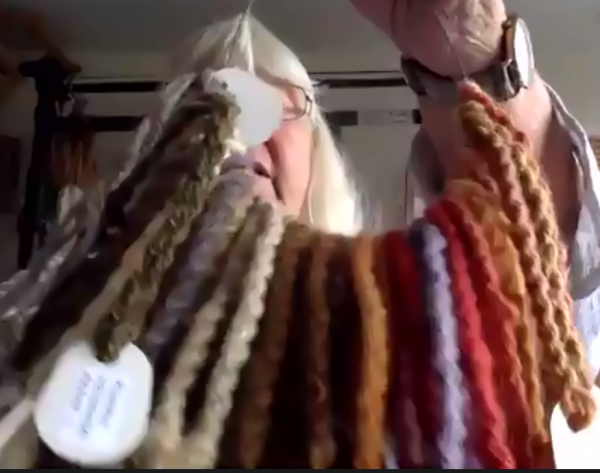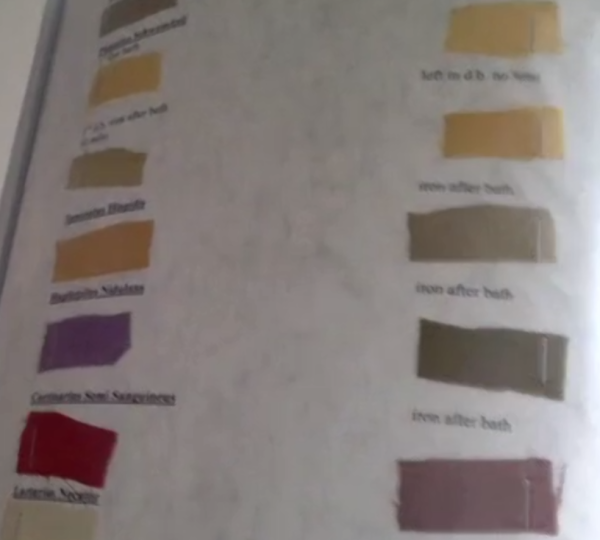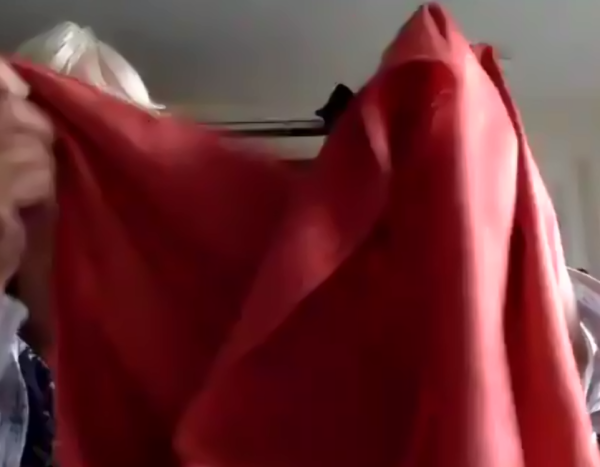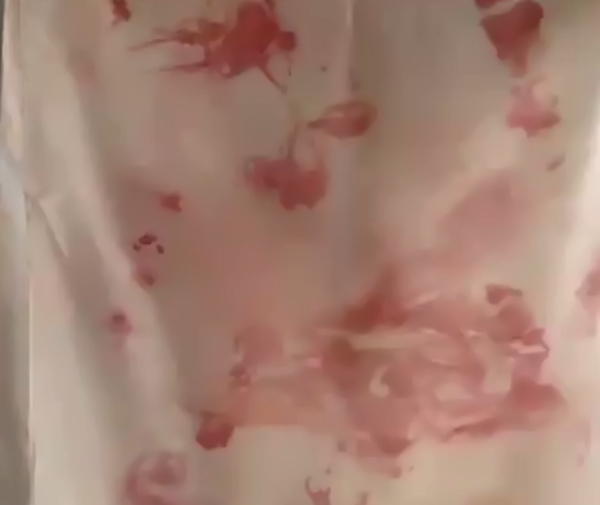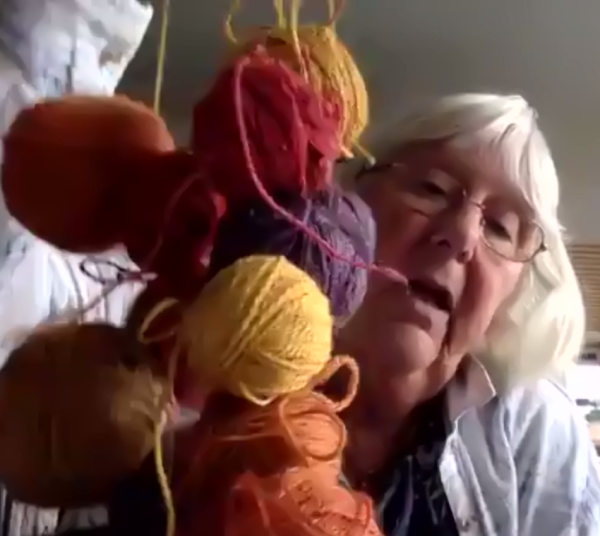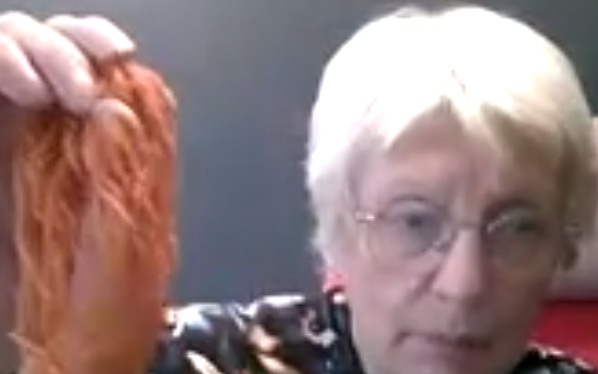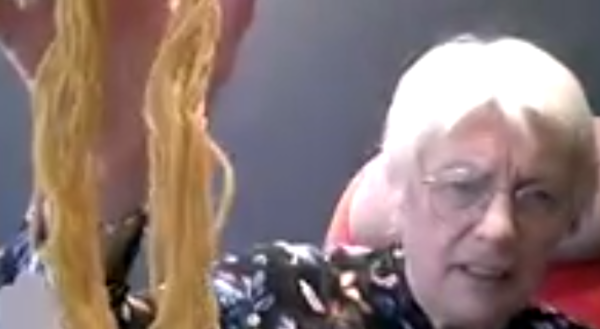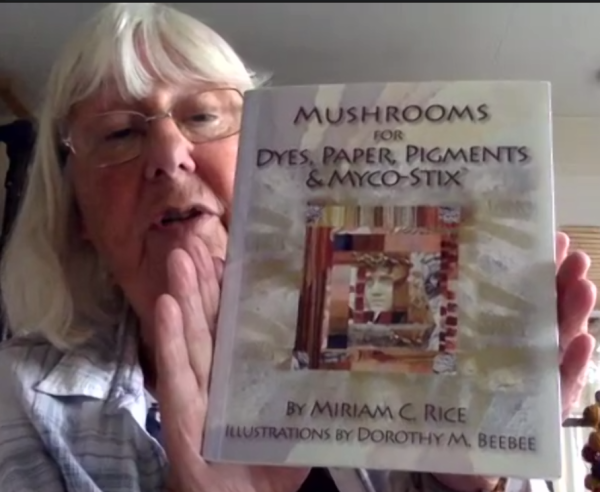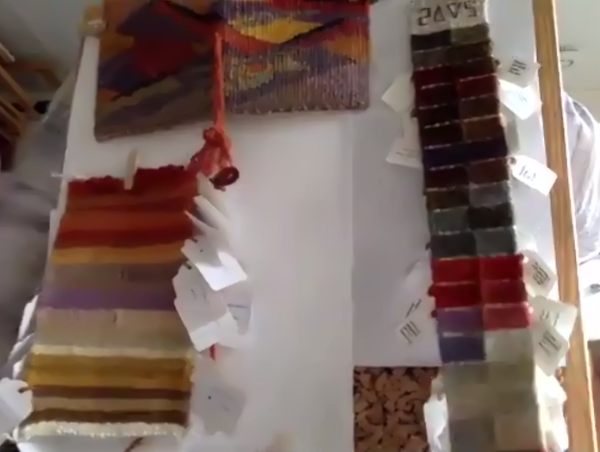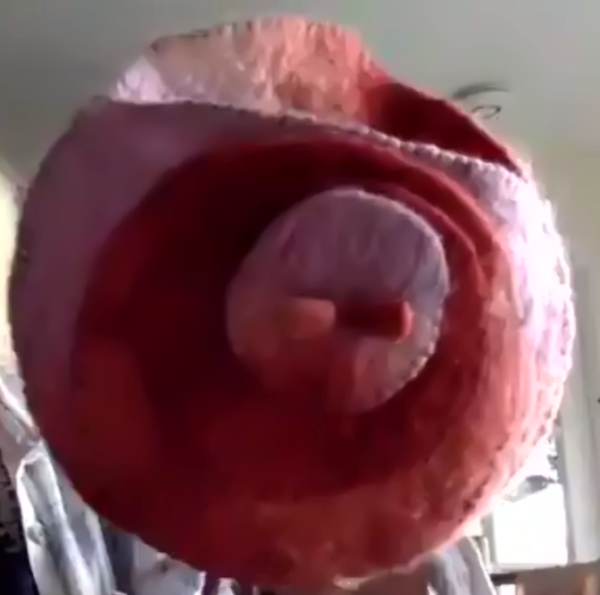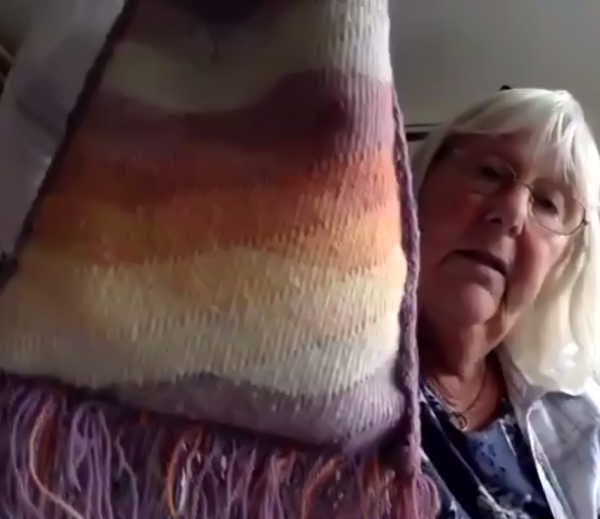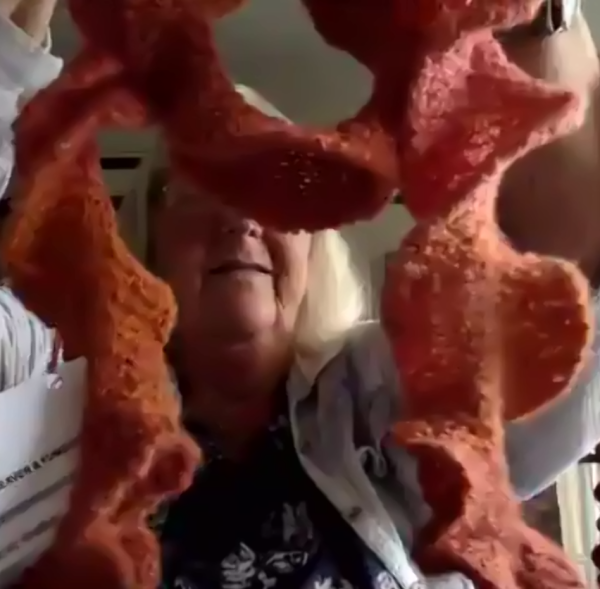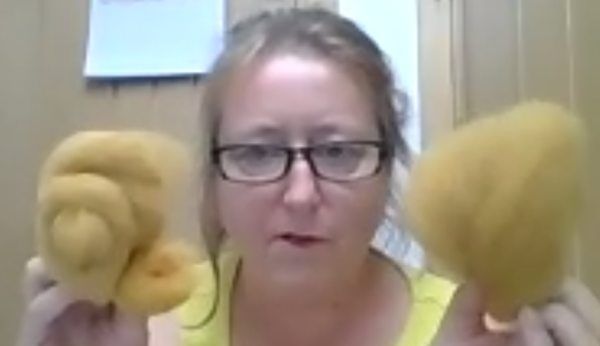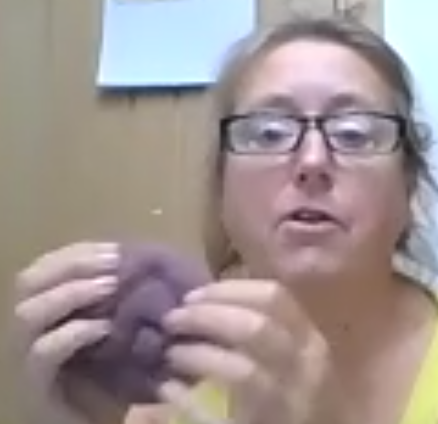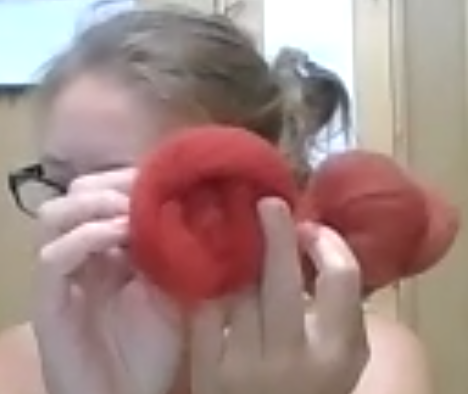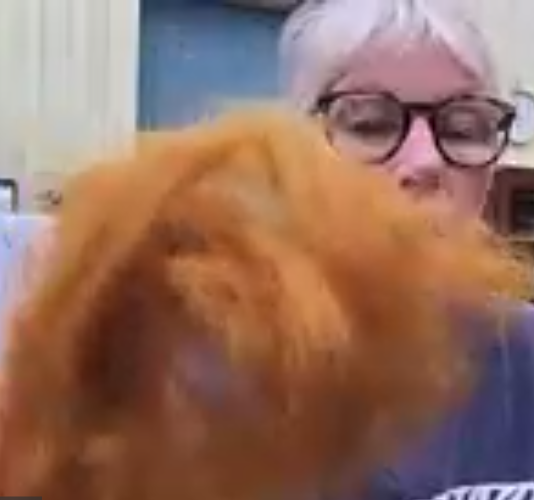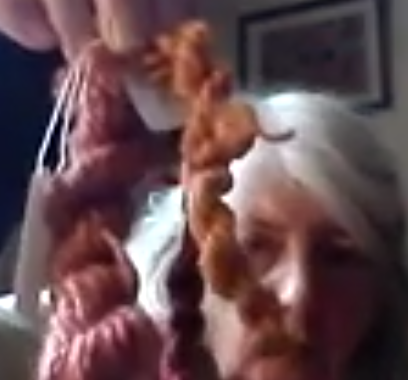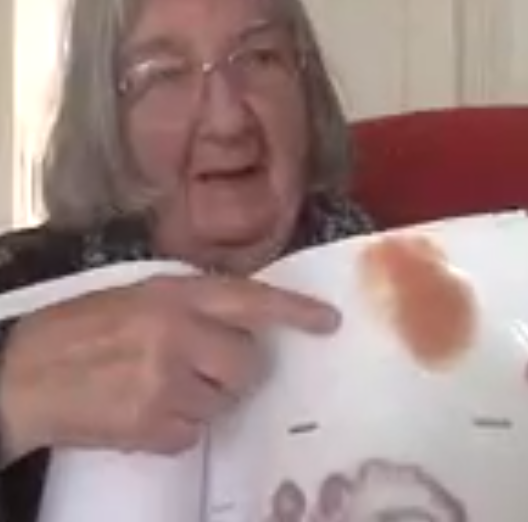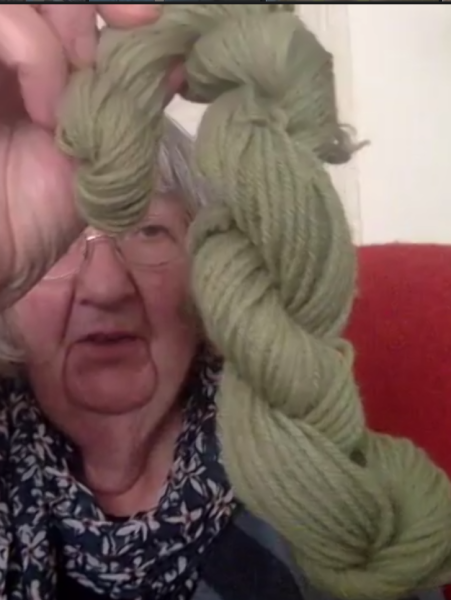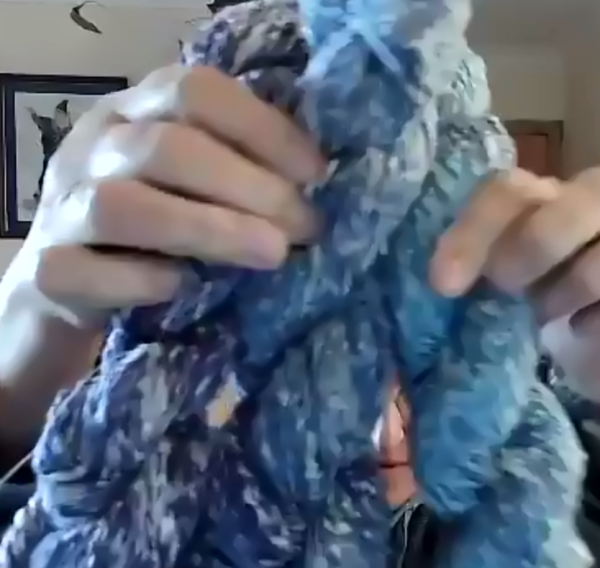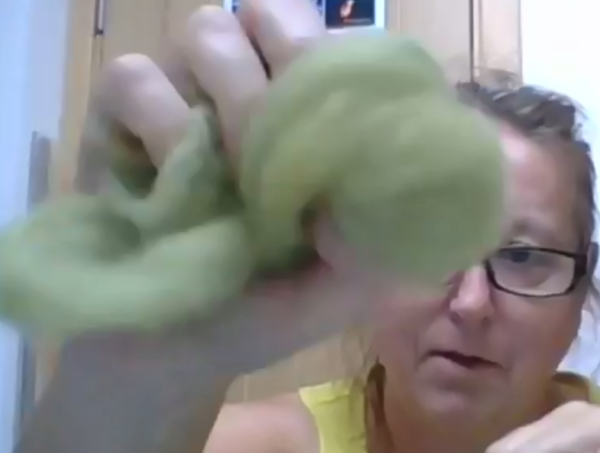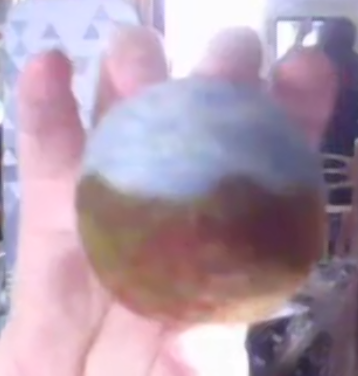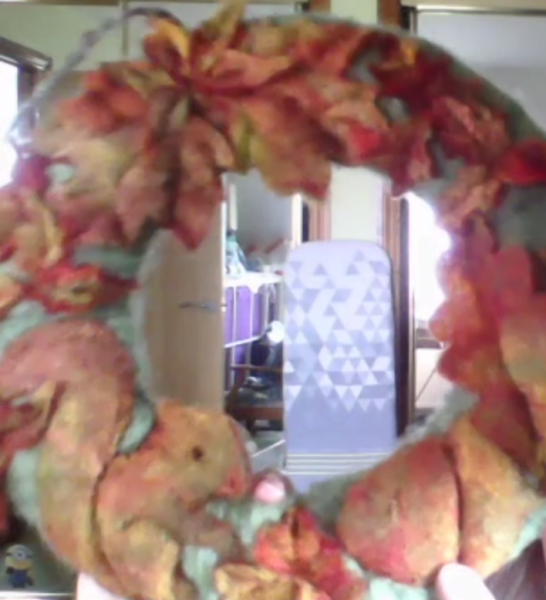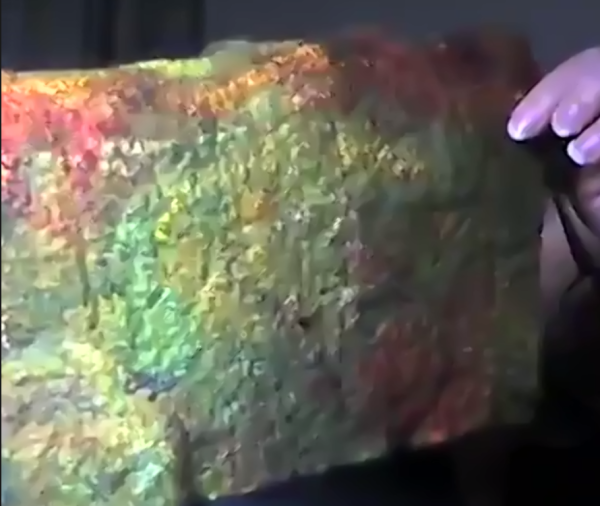Trisha Gow is a tapestry weaver, who discovered fungi dyeing when she attended the Battleby Gathering in the 1980s. She is a member of the Scottish Fungi Dye Group, and has attended the International Fungi and Fibre Symposium several times. Apparently, there is no historical record of the use of fungi dyes – research began in the 20th century. Unlike other natural dyes fungi dyes are not available commercially, and are not normally grown as garden plants so learning to identify dye producing fungi in the wild is important. Trisha suggested getting a mycologist to lead a fungus foray. Fungi dyeing is generally ecologically sound, so long as only the mature fruiting body is collected and only a few taken from each site – once the cap is fully opened it will have shed most of its spores.
The colours obtained from fungi include a range of reds, yellows, greens and purple, but no blue. Trisha advocates using an alum mordant then using an after bath to modify – ammonia and soda to brighten, iron to sadden. If fungi are not to be used immediately, they can be spread out to dry on absorbent paper – cold water soak to reconstitute before use. To dye, bring up to just below boiling point (you can use a pan of water, slow cooker, microwave, solar dyeing – but nothing you are going to use for cooking food!). The PH of the water should be around 9. Large bracket fungi should be broken up. The caps and stalks of some fungi give different shades, so try them separately the first time. Don’t throw the fungi away after one dye session, they may have more dye to give, and they can be dried to use again. Keeping records is important – quantities used etc.
Trisha went on to show us some of her samples: a tapestry woven from fungi dyed wool, a silk scarf, a spindle bag; and also some of her record books. Guild members who had been on the fungus foray with Trisha then gave feedback on the results from the fungi samples they had been given.
In the afternoon the dye discussion continued with samples of dyed skeins and fibre; plus some lovely samples of felting.

